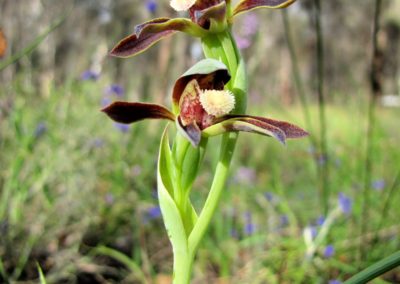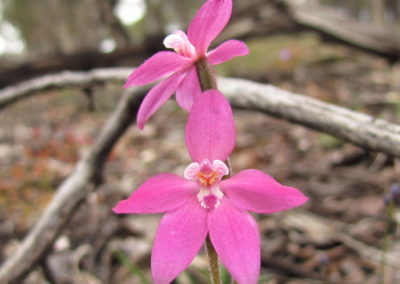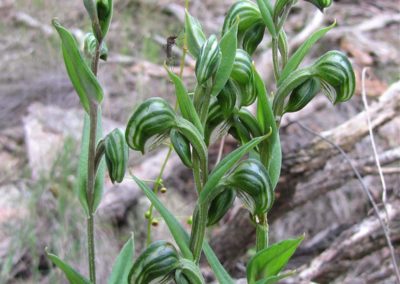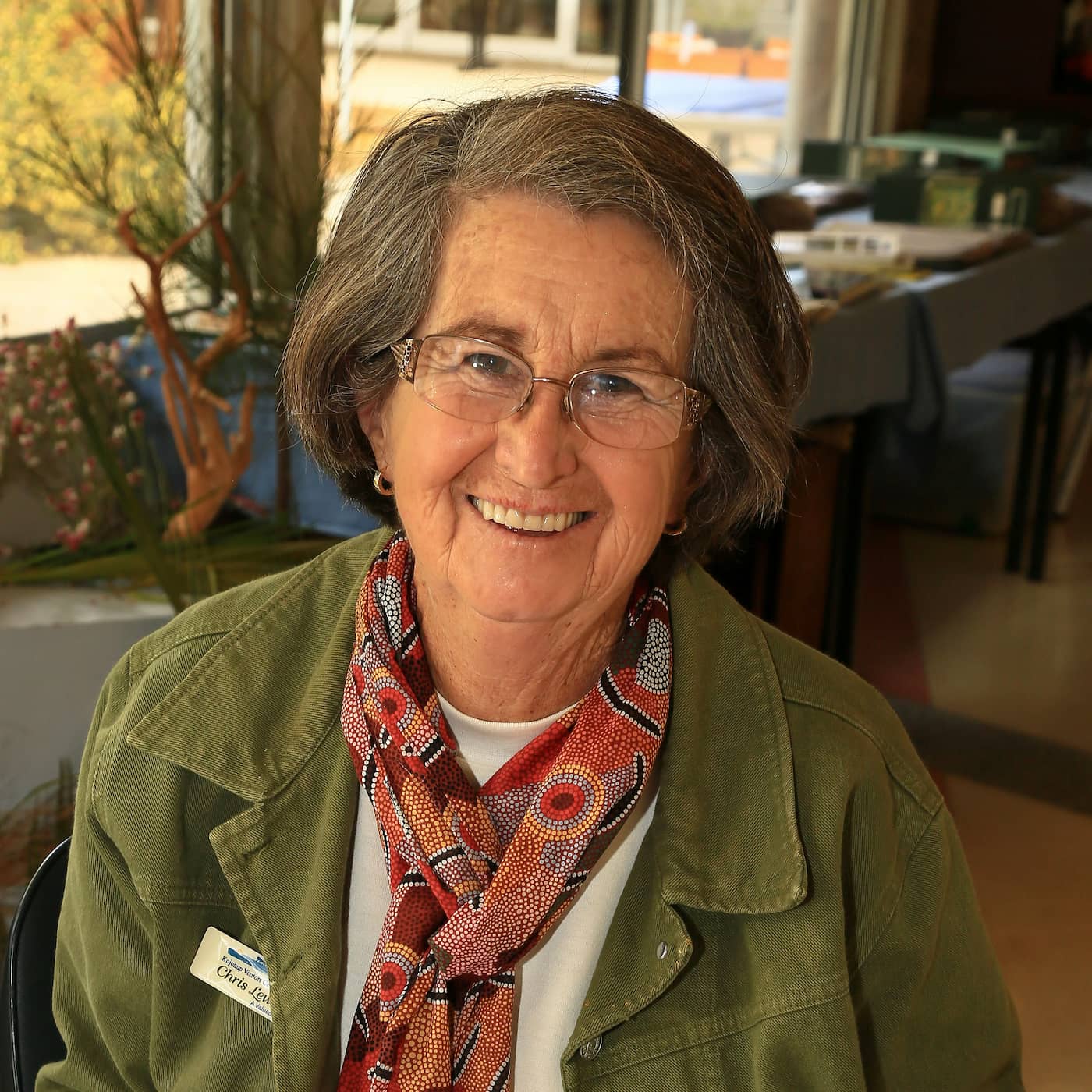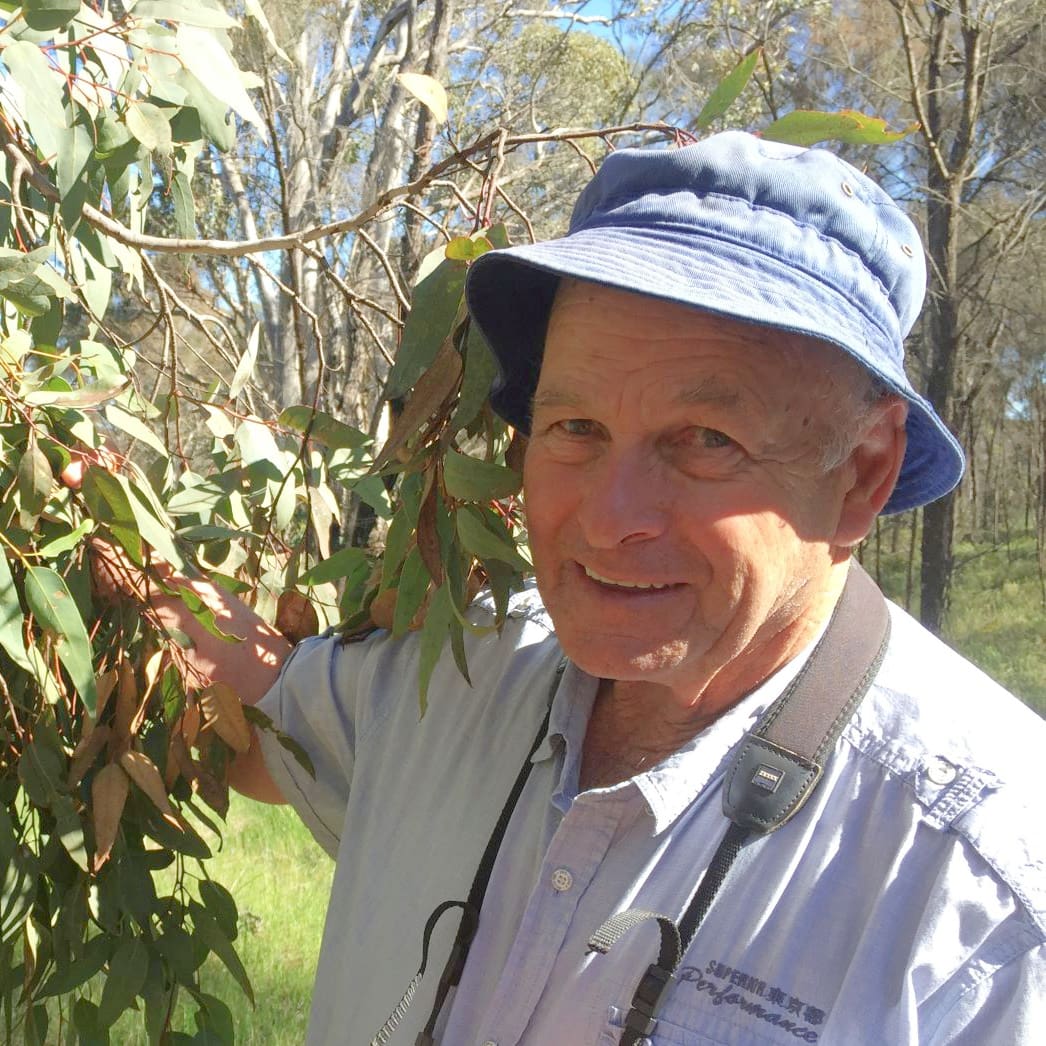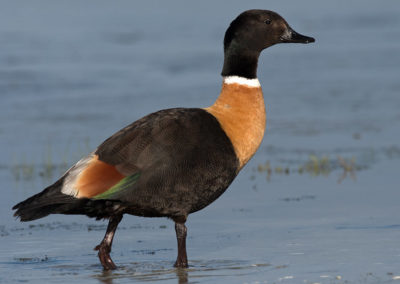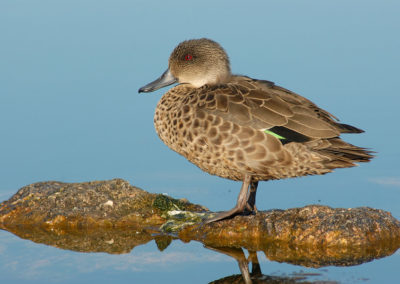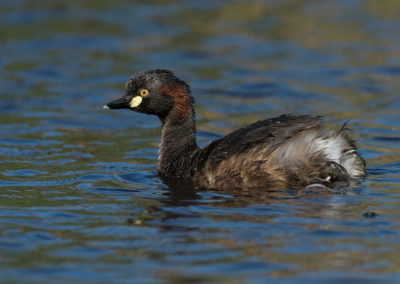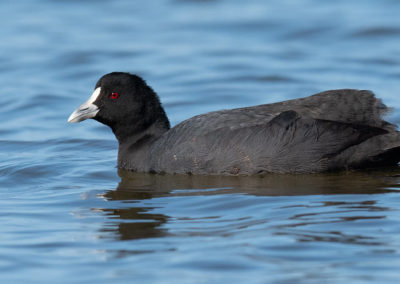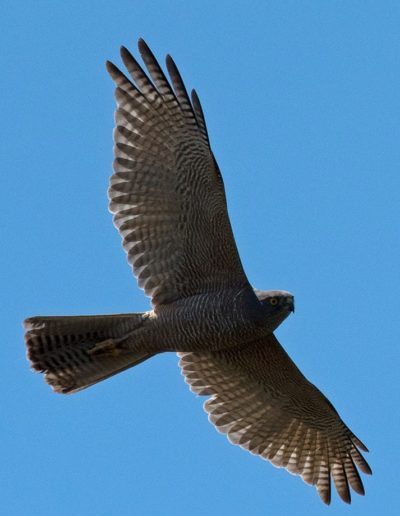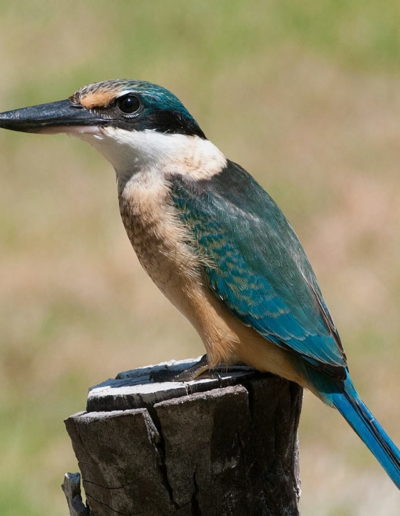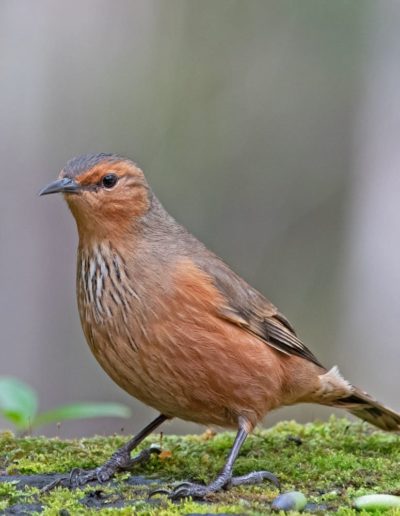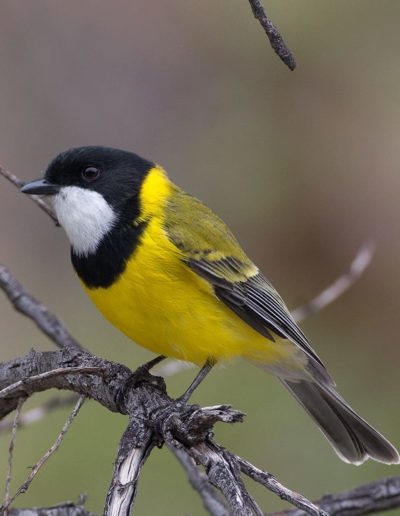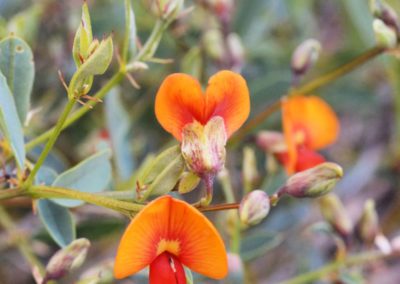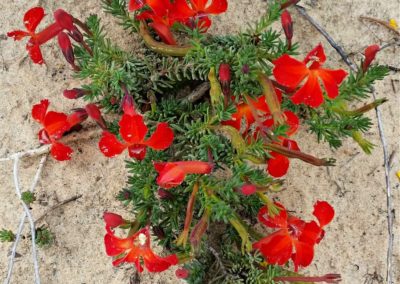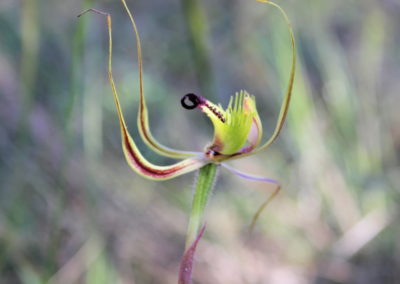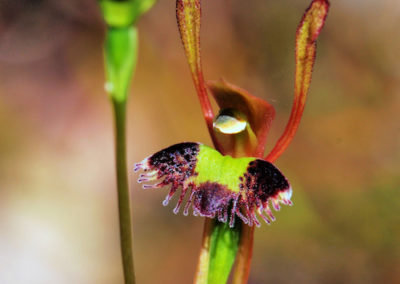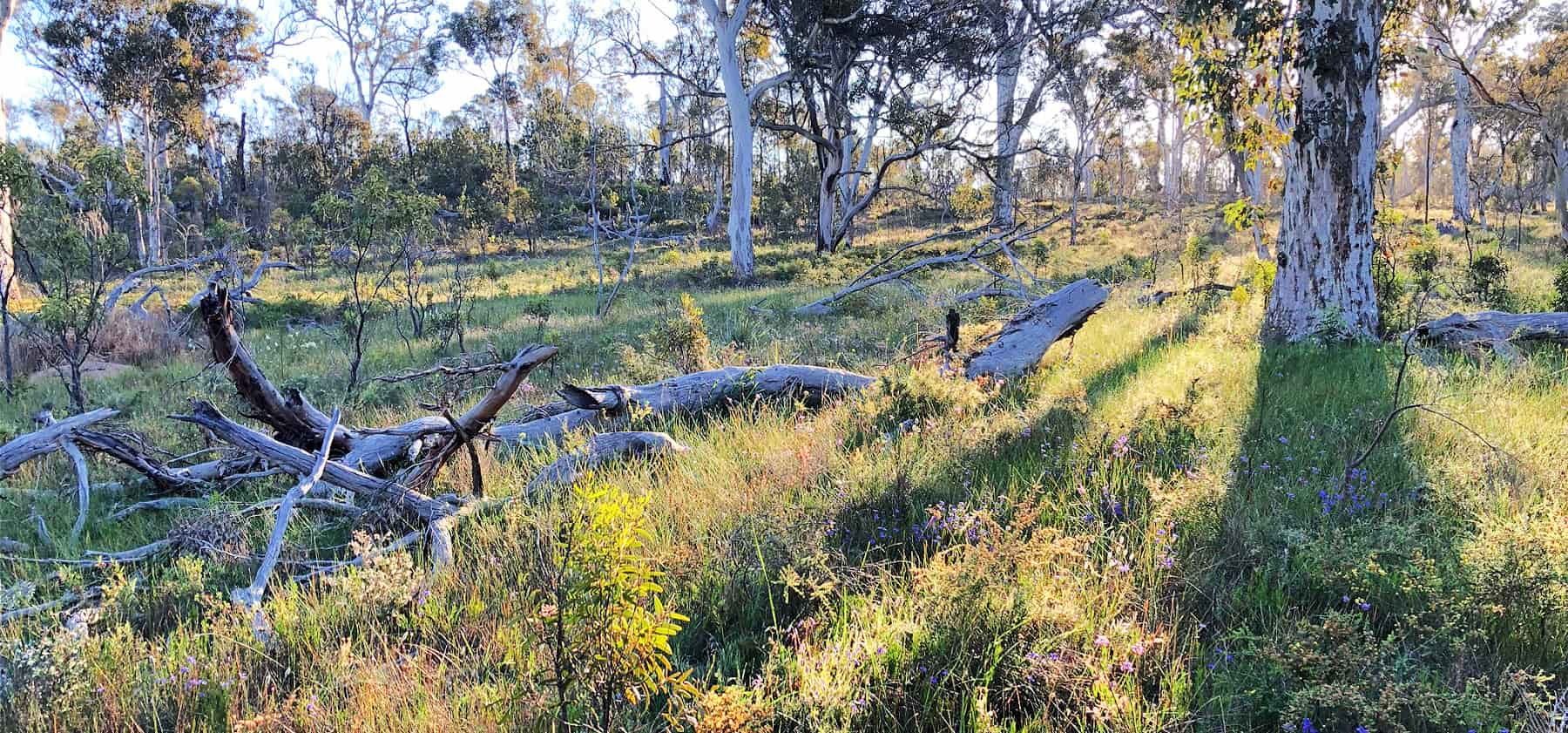-
Mobile Reception (Telstra)
Overview
The colours of spring – in the wildflowers and orchids – draw most visitors to Farrar Reserve. The reserve contains over 1,000 acres of woodland and wildflowers, some rare and endangered plants and many orchids.
In the middle of the reserve is the heritage listed Farrar Railway Dam, originally built as a water source for the steam railway. The dam was an important swimming spot before the town swimming pool was built in the 1970s. Now the large dam is a created habitat for numerous water birds, frogs and the Western long necked turtle.
Farrar Reserve contains one of the largest remaining stands of sheoak woodland in the area, and it is easy to walk through the open woodland of the reserve (a mixture of wandoo, jarrah and marri), sheoak groves, and granite outcrops.
Pink enamel orchid (Elythranthera emarginata)
Pink enamel orchid (Elythranthera emarginata). Image: Sue O’Halloran
Banded greenhood orchid (Pterostylis vittata)
Banded greenhood orchid (Pterostylis vittata). Image: Sue O’Halloran
Story of the place
Noongar Boodja
There are signs of the long habitation of this country by Noongar people, including scar trees with shield cutouts and a kodj tree (which have notches cut into the trunk with a kodj, a type of axe, so men could climb in search of bush foods like possums). The Kodj Gallery, in Kojonup’s Kodja Place Visitor Centre, has a kodj and a photo of a kodj tree on display.

The Kodja Place & the Kojonup Visitor Centre
143 Albany Highway
(08) 9831 0500
Just a few km away from Farrar Reserve is the award-winning Kodja Place. This interactive visitor centre tells the stories of the deep heritage of the Noongar people, and also the strength of will and self-reliance of the early pastoral families that opened up the land around this track that connected the water holes.
History of the Reserve

Image: Nicole Hodgson
Farrar Dam, in the centre of the reserve, was built in 1918 to provide water for the steam-powered railway, the main means of transport at the beginning of the 20th century.
When steam-powered train travel declined, the dam became an important recreation and swimming spot, before a swimming pool was built in Kojonup in 1970.
The train line between Boyup Brook and Kojonup remained operational until flooding in 1982 damaged the railway.
Farrar Dam came to be treasured by the local community for its botanical riches, and a place to view wildflowers.
The original railway line was restored for a tourism railway, but this has closed recently. It is possible to walk the 6km from Kojonup out to Farrar Reserve on the trail next to the former railway line.
Soils and diversity of life
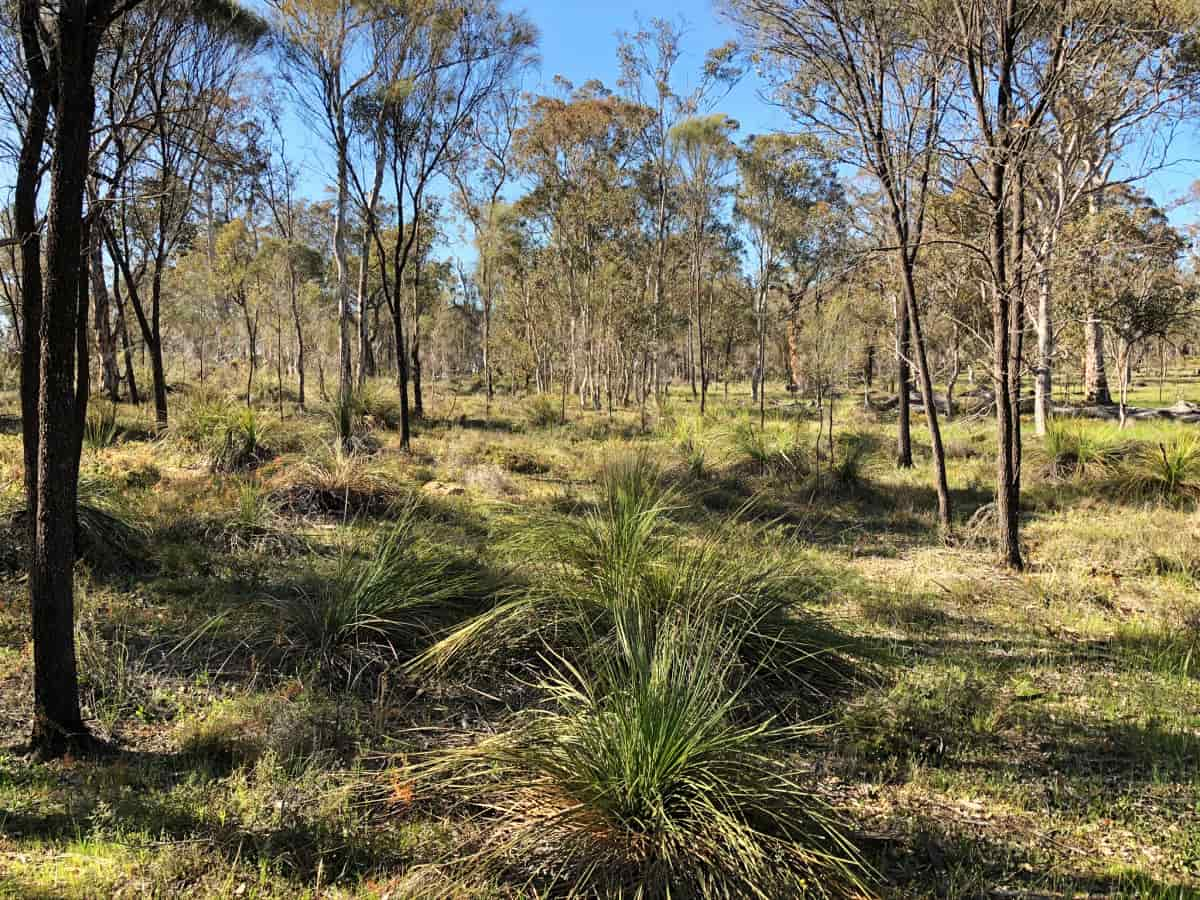
Image: Nicole Hodgson
One of the reasons south-western Australia has such immense diversity in plant species is because of the intricate mosaic of different soil types.
This diversity is obvious even in a small reserve like Farrar, where different collections of plants will be evident on different soil types.
Here at Farrar there are sheoak groves, open woodland, low scrub, granite outcrops and winter wet areas.
Plantlife
The Kojonup Regional Herbarium has identified hundreds of plant species in Farrar Reserve. There is an illustrated list of wildflower and orchids below.
Christine Lewis
Kojonup Regional Herbarium
“We are geographically in a rather unique position. Over on the west side of the Shire, there’s a lot of jarrah forest and forest plants and then as you come through to the north-east side, to the Bush Heritage reserve and some of the other bush areas out there to the east, you get your Wheatbelt plants there.
And again, down south, around Mobrup (in the Kojonup Shire), are little pockets of Stirling Range plants, just in the sandy area there. We’re between the wheatbelt and the southern forests, so we have more plant diversity than most places. ”
Birdlife

Image: Nicole Hodgson
The Farrar Dam provides important habitat for a number of waterbirds, especially for Kojonup which has less lakes and wetlands than some neighbouring areas.
The woodland areas surrounding the dam are also home to a large number of birds.
Wayne Zadow
Kojonup Bird Watcher and Guide
“As a nature lover, well it’s just a nice patch of bush to be able to go and explore… It’s good to have a patch of bush of reasonable size in amongst a lot of farming country, and there’s a mixture of different habitats at Farrar.
It’s good to have the variety, and it’s got the undergrowth for the birds to hide. They need protection, they need places to build the nests. They need to feed on insects.
Many of our little birds are insectivorous… even our honeyeaters don’t feed nectar to their babies, they are feeding insects to the chicks.”
Long-necked turtle & other fauna
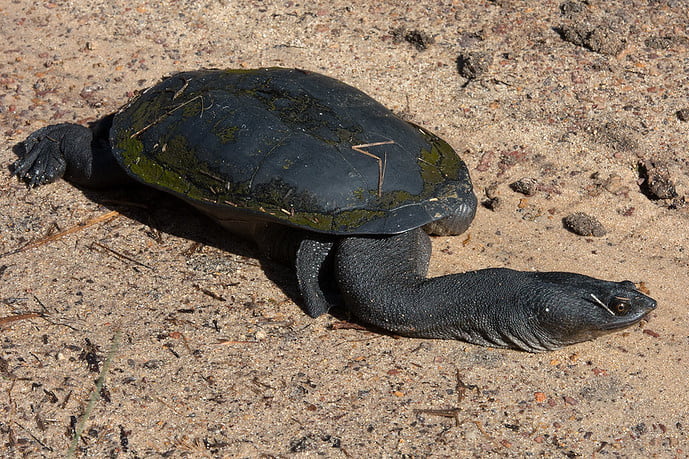
The Farrar railway dam also provides important habitat for the Western long-necked turtle.
This turtle is now largely lost from other waterways in the region because of increasing salinity.
Turtles not tortoises
Because of being seen out of the water, they are often mistaken for tortoises, but they are in fact freshwater turtles. Australian freshwater turtles have webbed feet with long, sharp claws. They are semi-aquatic – feeding in the water but can spend many hours a day out of the water.
Some small marsupials have been discovered at Farrar Reserve, including the red-tailed phascogale. Larger marsupials like kangaroos and wallabies also make their home in the reserve.
See & Do
Walks
It is possible to walk to Farrar Reserve along the scenic 12 km Farrar Walk Trail from the Visitor Centre along the old railway track to Farrar Siding.
At the Reserve, a walk trail takes you through the woodland. There is also a drive track to the dam. Click on the image to enlarge.
Birdlife
At the railway dam, the waterbirds likely to be present include:
Other woodland species you might see include birds of prey:
Other smaller birds you might see include:
Download an illustrated list of all bird species found at Farrar Reserve:
Wildflowers and Orchids
On the gravel areas, look out for the beautiful bright-blue Lechenaultia (as well as the red variety), the white candle flowers of the Stackhousia, and four species of brightly coloured Gastrolobium – the native ‘poison pea plants’.
Orchids will be found amongst the sheoak groves. Look out for the Hare, Pink Fairy, Greenhood and Mantis Orchids
Banded greenhood orchid (Pterostylis vittata)
Banded greenhood orchid (Pterostylis vittata). Image: Sue O’Halloran
The full list of wildflower and orchid species at Farrar Reserve:
Giving back and getting involved
To support the conservation work at Farrar Reserve, find out more from the Shire of Kojonup Landcare Officer.
Nearby
There are many other sites to visit nearby including:
Practical Information
Directions
To get to the Farrar Reserve, drive west from the Kojonup Visitor Centre for 8 km along the Blackwood Rd to the junction of Farrar Rd.
Or walk along the scenic 12 km Farrar Walk Trail from the Visitor Centre along the old railway track to Farrar siding.
Closest towns
Kojonup is just 8km away, by bitumen road. Via the walk trail Kojonup is 12km.
When to go
Djilba and Kambarang – from July to the end of November – is the best time to see the most flowers and orchids, and birds.
Where to eat and stay
See the suggestions from our friends at Great Southern Treasures:
Visitor Information

Kodja Place & the Kojonup Visitor Centre
143 Albany Highway
(08) 9831 0500
The award-winning Kodja Place is an interactive visitor centre, right at the bottom of the hill, where the creek runs through Apex Park.
After just an hour here, you’ll have a new appreciation of the deep heritage of the Noongar people, and also the strength of will and self-reliance of the early pastoral families that opened up the land around this track that connected the water holes.


